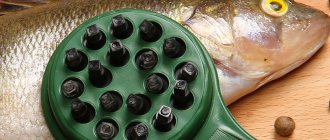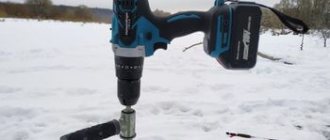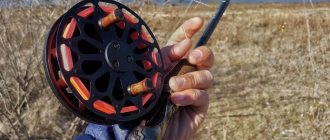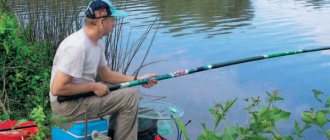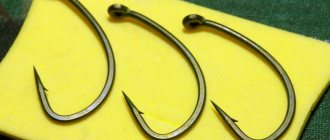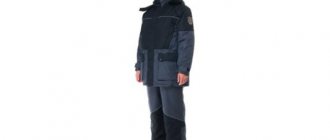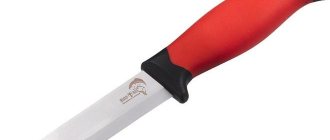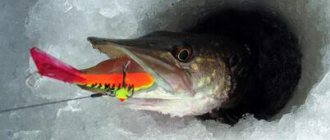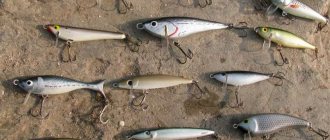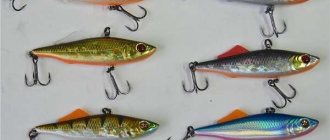Bottom fishing using feeders is becoming more and more popular and already has a significant army of admirers with sufficient experience and their own vision of its further development. One of the main problems in fishing with this method is the competent selection of the main cord of the tackle. After all, it is its qualities that are responsible for the timely transmission of the signal when biting, the casting range and the reliability of landing the caught fish.
Manufacturers of fishing equipment currently offer several options for equipping bottom rods with progressive types of fishing line for feeder fishing. Cords sold under such terms differ radically from each other in the composition of their material and production method, which further adds to the difficulty of determining the right choice.
What fishing line should I use for the feeder?
Parameters such as stretch coefficient or rigidity, the ability to restore the original structure as a result of critical twisting conditions of the material or its memory are priorities when choosing an effective fishing option. Monofilament fishing line, braided cords and a fluorocarbon version of the thread are the main directions in equipping a feeder rod. We will discuss which fishing line to choose for the feeder, based on the required fishing conditions and ensuring fishing comfort, throughout the article, dwelling in more detail on each possible choice.
The main factors when choosing gear are the thickness of the line for the feeder
A successful catch largely depends on the technical characteristics of modern equipment. The key point is thickness: what diameter of fishing line should I put on the feeder in the end? You should pay close attention to this parameter.
If the fishing line is not thick, it will fit well on the spool. The thinner, the more turns you can wind on the reel. The friction force during casting is reduced, and the casting distance is increased. But here it is necessary to remember about the tensile load and it is not at all necessary to opt for thick equipment. You just need to select the diameter of the fishing line for the feeder relative to the load and the expected catch.
Read more
What is a shock leader for a feeder and why is it needed?
Another condition that should be taken into account when purchasing equipment is the breaking load. Strength is denoted by the abbreviation Lb. Every popular gear manufacturer sets this parameter, but it should be remembered that it depends on the brand of fishing line with the same thickness. The value is indicated by virtually all brand manufacturers and, accordingly, the fisherman can independently determine what maximum weight the equipment will support.
To determine the diameter, we must first decide what kind of fish we are targeting.
The third factor is the buoyancy of fishing equipment. Fluorocarbon is a good sinking line for a feeder. With it you can make significant cranks 40-100 cm deeper than when fishing with monofilament equipment. If it is necessary for the tackle to float and the bait to remain at some distance from the bottom, you need to use other fishing devices.
This is especially important when there is a lot of bottom debris and growing algae at the fishing site. In such conditions, a leader line will be suitable.
The number of cores of the equipment is the fourth important factor. The greater the number of intertwined threads, the rounder it will be. The quality of weaving is difficult to determine with the naked eye; it often does not correspond to reality, but largely depends on technology and factory equipment. In the production of such gear, 3-8 cores are used, and the more there are, the more expensive the equipment you like.
The color of the line for the feeder plays an important role. Experienced fishermen do not recommend buying light-colored equipment when fishing in the reeds. It is advisable to take the most inconspicuous gear, and this rule applies to lovers of float fishing, but spinning anglers and feeders need colored fishing line in order to better control the process when they have to fish out the fish, preventing it from escaping or hiding in a snag. By the color of the equipment, you can determine the condition of whether it is suitable for fishing or not (if it becomes cloudy, it has lost some of the necessary properties).
When choosing a leader line for a feeder, you need to rely on several important criteria:
- take skeins of 50 meters;
- do not buy cheap samples;
- the fishing line for leashes must have a round cross-section;
- pull the piece between your fingers with force and trace the twist;
- check for tearing, pull the ends in different directions;
- diameter can be selected from 0.1 to 0.16 mm.
Experienced fishermen do not think about which fishing line to choose for leashes on the feeder. They use 0.12mm tooling.
When wondering which fishing line is best for a feeder, one cannot ignore the question of the fishing line's sailability in the current and wind.
Fishing in deep water is often incomplete without a shock leader. This is a small piece of durable tackle (0.5-0.8 mm cross-section) made of braided monofilament - approximately 9-11 m.
It serves as an additional device when:
- fishing is associated with bringing the fish into the landing net, jerking, and tensioning the fishing line;
- false casting, not releasing the line from the reel spool.
The shock leader, regardless of the question of which fishing line to choose for the feeder, is used by most experienced fishermen. They know for sure that without safety meters, the safety of the fishing line is reduced.
Monofilament
A monofilament line for a feeder in this fishing direction is not a universal tool capable of covering various conditions of a fishing session. There are a number of significant disadvantages of this material, which have a rather negative effect on the progress of fishing.
Important! In particular, high stretch coefficients do not allow the use of monofilament lines for long fishing distances.
The fishing limit of 25-30 meters is a serious reason to abandon this option. When using such material at long fishing distances, the angler simply will not see the bite signal. Manufacturers of monofilament lines for bottom tackle have made significant progress in increasing the rigidity of the material, but there is still a huge gap left before braided lines. Therefore, only a short cast gives the effect of high-quality fishing when using monofilament.
In terms of reducing memory of the material, things are much better. The monofilament is capable of returning to its original shape both after it is wound on a reel and after the thread is unwinded, which is affected by the torque from the rotating feeder. High-quality fishing lines, with a clean and smooth surface, have low abrasion and the same low windage characteristics.
Peculiarities
Buoyancy
Experienced fishermen have no doubt that it is better to choose a sinking line. On its packaging there is a special designation Sinking.
Number of cores
If you choose a monofilament, it can be single-core or double-core. Some manufacturers use a special manufacturing technology where two completely different materials are pressed after merging. Monofilaments with two cores have a sufficient level of rigidity as well as wear resistance.
They communicate the bite well to the fisherman. Twin-core ones have several negative qualities. Due to too much stiffness, they may not fly as well as those with a single core.
If a two-core monofilament is used at a distance not exceeding 30 meters, then this minus is not felt at all. The price of such a thread is higher than that of a single-strand thread, but it is very good for catching medium-sized fish.
Braids can have 4,6,8,12 strands. Most often, fishermen use those that have 4 or 8 cores. The choice of the number of cores in the braid will be influenced by the conditions in which fishing takes place.
The best option is a 4-strand braid. It has the highest level of wear resistance and does not rub against the bottom or stones of the reservoir. With 8 cores, as a rule, it is used exclusively for long casts. With its help you can increase your casting range by almost 10 meters.
Braided line for feeder
Feeder line made of hard natural fibers and with a synthetic component is the basis, which fishermen are accustomed to calling braid. Braided line for the feeder has taken a place ahead of other materials due to its low stretch coefficient, but at the same time quite high ductility, incredible strength with small diameters, and minimal loss of reliability when forming knots.
These positive qualities were able to smooth out significant shortcomings in the form of increased windage, which is compensated by the thinness of the base. The braid material has no memory, so you can reel it in an infinite number of times without fear of the negative twisting effect that can be caused by both the reel spool and the feeder in the rig.
The possibility of fiber coloring that is resistant to wet conditions allowed the manufacturer of this accessory to produce a wide range of colors for this feeder line, which increases its camouflage properties when fishing in different shades of water. According to professionals in this area of bottom fishing, it is the braided version of the base that is better for the feeder, especially during amateur fishing, when you can close your eyes to some critical subtleties.
Important! The nuance of using braid is the requirements for the rings of the tackle, which must have sufficiently durable coatings, since the rigidity of the braid, and especially when a heavy feeder is used, cuts weak deposits, rendering both the tackle and the cord itself completely unusable.
Alternative
The best fishing line for a feeder made of fluorocarbon materials did not materialize due to the high fragility of this base and low strength, which adds additional values to its diameter and, consequently, increases the windage of the cord. But this material has found application ideally for installation with a shock leader.
Tying a couple of meters to the main cord made of mono- or braided fishing line, mastering the technique of tying a complex knot, is a very real manipulation, but the effectiveness of the equipment under certain fishing conditions from these actions increases significantly. Fluorocarbon is invisible in water and is quite resistant to ultraviolet radiation and is not afraid of temperature changes. This material has high wear resistance, which has a positive effect on the reliability of the equipment when fishing on shell rock and pebble bottom. The excessive thickness of the line for the feeder is compensated by poor memory of the material, extreme rigidity and incredible transparency.
Popular brands
Next, we will consider the most popular models of fishing lines from various manufacturers.
Mikado
A Japanese brand that produces various types of fishing lines for feeders. There are two popular inexpensive lines: Mikado Feeder and Sensei Feeder. They are distinguished by good rigidity, ideal for feeder fishing, low memory and reasonable price. The disadvantages include a small selection of diameters.
The cost of the Mikado Feeder fishing line is about 200 rubles.
Also among Mikado products there are cheaper versions of lines from the Sensual series, but their wear resistance leaves much to be desired, since this equipment is enough for one season.
Maver
The company does not produce specialized feeder lines, but some models, for example, Maver SLR or Dual Band, can be used as such, since they have high wear resistance and protection from abrasion from obstacles on the bottom. In addition, they have a small memory and low extensibility.
Dual Band fishing line with a thickness of 0.25 mm, unrolled in 150 meters, costs about 650 rubles.
To absorb the jerks of the fish, the manufacturer has Maver Red Devil monofilament. It allows cutting at distances of up to 25 m, while the material from which it is made has increased resistance to friction.
Line for leashes on the feeder
Line for leashes is the most common component of fishing equipment. In this area, the fisherman has a wide range of selection of diameters, buoyancy, colors, rigidity and plasticity of the sample. In addition to the main function of connecting the hook with the main cord of the equipment, leading lines perform a number of equally significant tasks, the solution of which improves the comfort and efficiency of fishing.
Important! It is worth noting that for the leash, scaffolding is selected that is an order of magnitude smaller in diameter than the main cord.
Thus, when hooked, only the hook is lost, and the leash under such circumstances performs a protective function, leaving the main part of the equipment, which includes the expensive feeder, intact. The base feeder line may differ in color from the leash, because the main role of camouflage lies precisely on this final part of the installation, which is in direct contact with the fish being caught and should not cause any special suspicion in it. Miniature fasteners or knots with options for looped sliding ends help secure the leash to the main installation.
How to choose a fishing line for a feeder
The choice of base material is influenced by the fishing distance, which we have already discussed in detail in the previous chapters of the article.
Important! The diameter of the line for the feeder is selected according to several criteria. Feeder weight and expected catch size.
In turn, the mass of the feeder is influenced by the characteristics of the reservoir in terms of current strength. The heavier the equipment, the higher the diameter of the cord.
To balance the gear, shock leaders are used that can reduce the diameter of the main cord, regardless of the weight of the equipment. Depending on the requirements of the fishing conditions, the shock leader not only helps in delivering heavy rigs to the fishing point, but also reduces the windage of the equipment and makes it easier to catch trophies.
Important! It is also worth paying attention to the technique used to tie the feeder to the fishing line. Sliding installations require smaller cord sections, while blind installations are the opposite.
Durability
Regarding this parameter, the obvious advantage here is with braided line, since monofilament fishing line is quite sensitive to ultraviolet radiation emitted by the sun.
Constant exposure to sunlight significantly reduces the carrying capacity of monofilament, however, it is worth noting: everything, of course, depends directly on the fishing conditions. You can read the material on choosing a feeder rod.
Rating of the best manufacturers
Feeder line is not the main product of manufacturers doing business in this sector, but there are companies that adequately fill this niche with specific types of line suitable for the conditions of this type of fishing. Based on the adequacy of price and quality parameters, we will try to give recommendations for purchasing a product of this type by compiling a rating of manufacturing companies.
Shimano
Among the many companies, what stands out is a product developed and already quite widely introduced into the field of feeder fishing from the Shimano brand. I would like to note that the feeder lines of this company are quite expensive, but at the same time they are durable in their operation. Compared to similar representatives of other offers, this accessory will last three or even four times longer. Shimano Technium and Shimano Technium Tribal cover the angler's needs for a monofeeder cord and a variety of colors and diameter variations. The rigidity of the fishing line is close to the rigidity of a braided cord and, under certain conditions, these fishing lines provide fishing opportunities at longer distances.
Suffix
Suffix offers the consumer cheaper cord options, but they are quite suitable for feeder conditions. It's definitely worth paying attention to Sufix Specialist Carp. This monk has a low elongation coefficient and high abrasion resistance. Having purchased a reel of 300 meters, the angler will remain closed on the accessory per rod for two full seasons. The range of diameters is also not without variety. Multiples of 0.05 mm are available.
Trabucco
Trabucco stands out for its cheapest options for feeder-oriented monofilaments, which cannot but please the angler. But when purchasing a product, you need to be careful when selecting the diameter and always check this parameter visually, or even using a measuring tool. The company often makes mistakes in accurately marking the fishing line and can easily overestimate this indicator. Otherwise, average rigidity parameters and weak memory provide good opportunities for using the accessory in fishing practice. The Trabucco T-force feeder, with a volume of one hundred meters or more, will cover the intensive fishing season on the sandy and muddy bottoms of the reservoir quite well.
Owner
Owner offers monofilament lines for extremely short distances. The brand Owner Broad and Owner Broad Carp and its winding from one hundred to three hundred meters are more suitable cord bases for the feeder. The advantages are low curling and wear resistance, and the price is pleasing with its low performance. But the high elongation negates the use at longer distances, and over twenty meters the sensitivity of the gear is lost several times.
Mikado
Well, the Mikado . Feeder monks of its production with high rigidity, low windage and low memory cover the fishing conditions in reservoirs with moderate and medium currents. The price parameters are in the budget comfort zone, but the manufacturer is clearly not worried about the range of diameters. Alternating diameters every 0.5 mm cannot satisfy the need for some specific conditions of fishing parameters. The Mikado Sensei Feeder in black is especially recommended by experts for use in feeder fishing sessions.
Every fisherman who is interested in this method can determine the best lines for a feeder based on personal experience and their practical application.
Feeder line, monofilament or braided
Nowadays, two types of fishing lines are considered the most popular among fishermen: monofilament and braided. Both types have pros and cons and can be suitable for fishing in different conditions.
Monofilament line
Monofilament has long been used by fishermen, so all its characteristics that can affect the fishing process have long been known and tested. The advantages of monofilament fishing line include:
- extensibility. This quality becomes especially useful when large specimens are hooked. During fishing, the jerks of the fish are dampened and softened. As a result of this, it becomes much easier for the fisherman to deal with trophy specimens. This quality especially helps when a long cast has been made, and the prey has to be pulled from a long distance;
- hydrophobicity. As you know, the impact of water on many objects can significantly reduce their service life. Monofilament fishing line is not destroyed by the influence of liquid, since it simply does not allow moisture to pass through and repels it. This quality allows you to use monofilament threads for winter fishing in severe frosts;
- Cost is one of the most important factors influencing fishermen's decisions to purchase monofilament. The price of a high-quality monofilament is approximately half that of the cheapest braids. At the same time, high-quality cords cost 5-8 times more than the most expensive types of monofilament.
This type of fishing line also has a lot of disadvantages. The most unpleasant of them are:
- lifetime. The natural aging of monofilament, as a result of which it can no longer be used, occurs in two seasons. After this, the fishing line becomes brittle and is definitely not useful for fishing;
- memory effect. This property makes itself felt after casting. The line on the reel remembers its position. When the fisherman sends the bait into the water, the monofilament forms loops. This affects the casting distance, the ability of the line to align in the water and the quality of fishing in general.
Braided cord
Many fishermen believe that braided feeder is better than monofilament. This opinion was influenced by the following properties that the cord has:
- bite sensitivity. This is influenced by the lack of stretchability, which in monofilament acts as an advantage. Thanks to this, even the weakest bite will not pass unnoticed, since the line will instantly transfer it to the top of the rod;
- Braided cords have no memory The tackle quickly comes off the spool and levels out in the water. The casting range is greater than when using the previous type of fishing line;
- high strength. This indicator makes it possible to catch large fish and affects the casting distance. Since the diameter is small, the windage of the fishing line in the water is also small;
- to aging as monofilament. It can easily serve for four seasons.
The presence of serious advantages did not relieve the braided wire from its disadvantages, which are also quite serious:
- price. Perhaps this becomes the main obstacle that fishermen face when choosing gear. Some people choose other types of fishing line due to the high price of cords;
- lack of extensibility acts not only as an advantage, but also as a disadvantage. When fishing for large specimens, this quality often becomes the cause of failure. Fighting prey is more difficult;
- Knots that are well tightened cannot be untied.
Feeder line
Many famous manufacturers have long started producing special feeder lines. In some ways they are still inferior to braided threads, but there are cases when the use of the latter is irrelevant, and it is more appropriate to use feeder lines.
An important factor when choosing is price. Quite often you have to fish in reservoirs where the bottom is covered with various stones and shells. The feeder line is not so susceptible to mechanical stress, and the risk of losing it is much lower. If it was not possible to save the thread, then it will not hit your pocket as much as compared to a similar situation with braid.
The sensitivity of the feeder line and braid is approximately the same when casting bait at 20-30 meters. Therefore, it is worth thinking about which fishing line is best for the feeder when carrying out such fishing.
The difference between feeder line and regular monofilament lies in its rigidity. The stretch should be much less.
